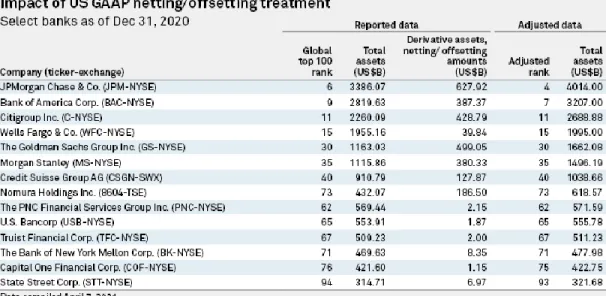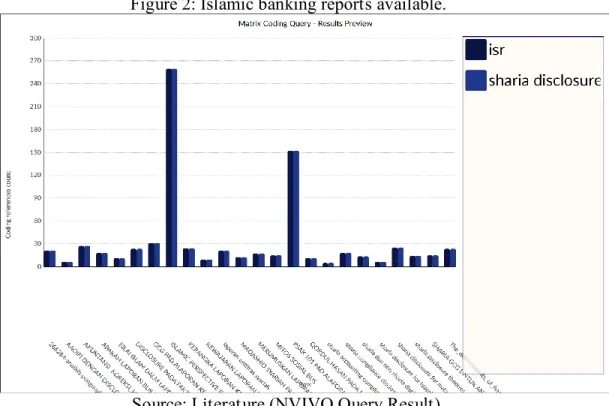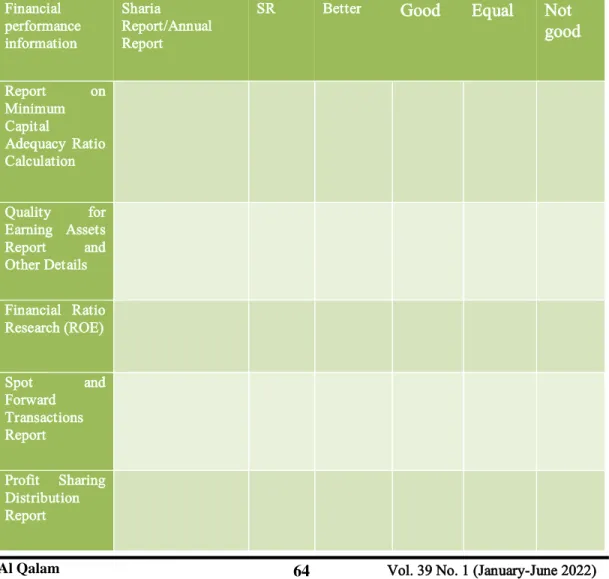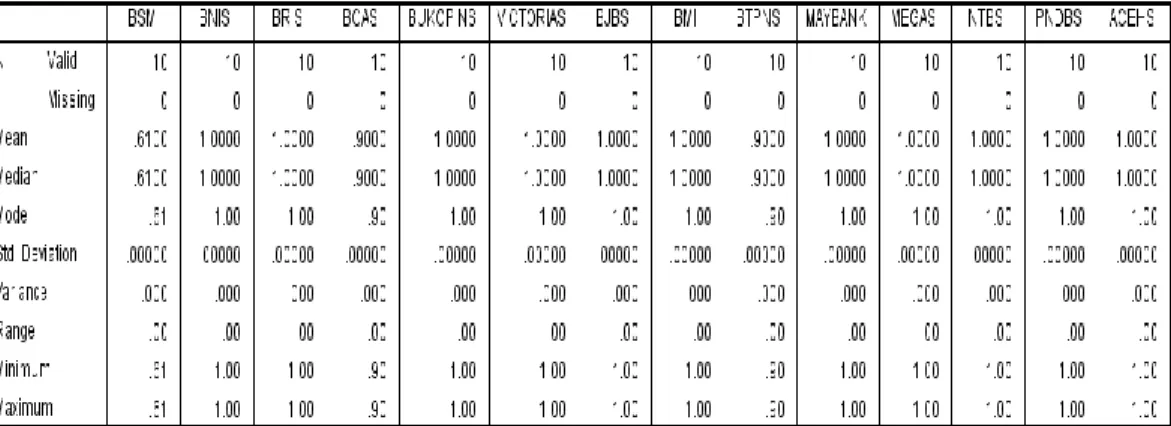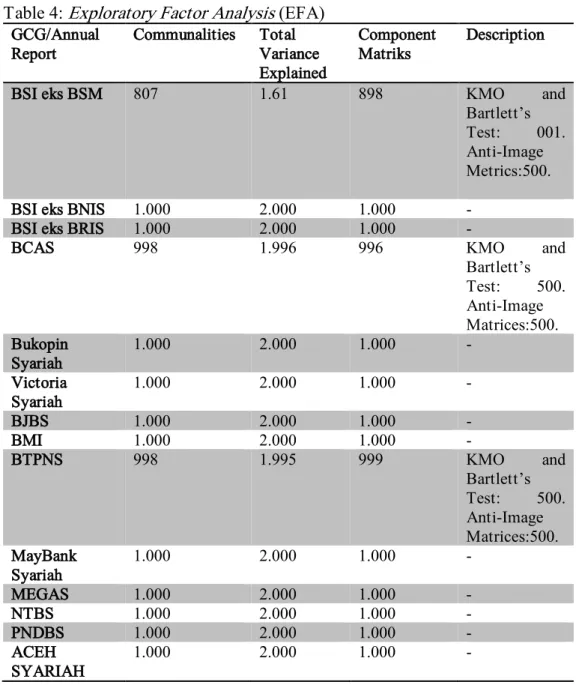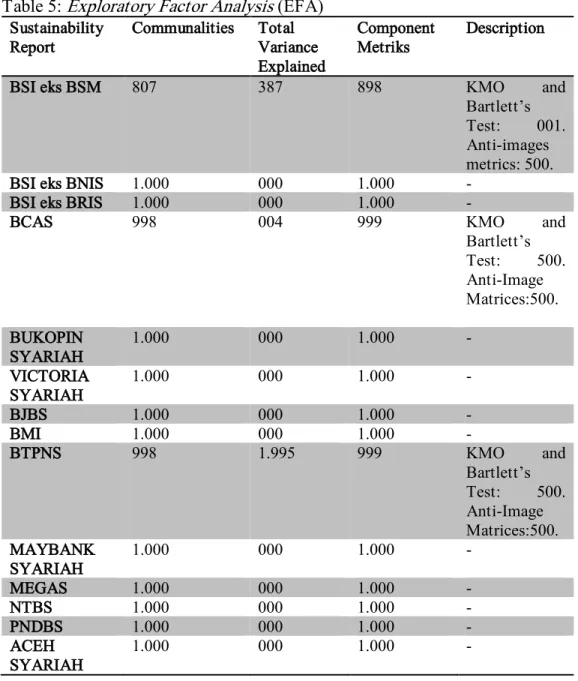DOI : http://dx.doi.org/10.32678/alqalam.v39i1 P-ISSN : 1410-3222
E-ISSN : 2620-598X
Article History
Submitted : February 29, 2022 Accepted : May 20, 2022 Published : June 17, 2022
The Implementation of Sharia banking in Indonesia Pertaining Sustainable Sharia Measurement
Ahmad Afif1 Muh. Nadratuzzaman Hosen2
1,2Sharia Doctoral Program, Universitas Islam Negeri Syarif Hidayatullah Jakarta
*Corresponding Author:
Abstract:
The purpose of this paper is to investigated how effective the GCG/annual report, and Sustainability, are in presenting information on the performance of Sharia banking in Indonesia applying sharia reporting criteria. This analysis will bring up the report based on a copy of the Financial Services Authority of the Republic of Indonesia's Circular Letter No. 10 / SEOJK.03/2020 on Transparency and Report Publication for Islamic Commercial Banks and Sharia Business Units. In the GCG and sustainable report, the variables of banking size, ratio, and Sharia Supervisory Board size. Secondary data from 12 Islamic banks from 2019 and 2020 is being used in study, that either takes a descriptive quantitative approach. Furthermore, the determined indicators will be sorted using factor analysis with SPSS 12. The GCG/annual report shows better performance than the sustainability report, as evidenced by significant values in the whole test and factor analysis stages. 11 Islamic commercial banks, on the other contrary, do not have a test stage but do have a detailed study. Meanwhile, the sustainability report is not greater to the GCG/annual report because, while the sustainability report is on average significant, it lacks variable testing stages that are comparable with the positive influence on the produced factors. The OJK would update POJK 51 / POJK.03/2017 well about Implementation of Sustainable Finance for Financial Services Institutions, Issuers, and Public Companies for sharia report indicator points, along with other observations and recommendations. Second, Islamic banks must comply to protracted sharia reporting standards.
Keywords: Sharia Report, GCG/Annual Report, and Sustainability Report.
Copyright@2022 (author/s)
This work is licensed under a Creative Commons Attribution-ShareAlike 4.0 International License
INTRODUCTION
Transparency and performance reports on a company's performance are prerequisites (Dan et al., 2020; Commissioner & Services, 2015; Financial Services Authority, 2016). This regulation had been stated in the Financial Services Authority (OJK) for conventional banking, but it was followed by increased Islamic banking regulations in the Circular Letter of the Financial Services Authority of the Republic of Indonesia Number 10 / SEOJK.03/2020 concerning Transparency and Publication of Commercial Bank Reports. Sharia Business Unit and Shariah.
The editors of Islamic Commercial Banks (BUS) prepare, announce, and/or submit Publication Reports it include the reading: First, financial publication reports and financial performance information; Second, risk and capital exposure reports;
Third, reports on the publication of material information or facts; and fourth, other reports.
In fact, the last point becomes less evident. This is due to fact that editors' awareness of many types of reports in Islamic banking is different (Hapsari, 2018;
Harisa et al., 2019; Kurniawan et al., 2020; Muklisin, 2018; Rofelawaty, 2014;
Sulistyawati & Qadriatin, 2019). There is good corporate governance (GCG) but also a performance disclosure from the Gives examples (Agustami & Listiani, 2019;
Fortrania & Oktaviana, 2016; Widari et al., 2017).
Organizations constantly publish GCG reports that have included principles and indicators. Therefore, risk management is integrated in to administration of corporate governance risk (Financial Services Authority of the Republic of Indonesia, 2016). Banks are required to adopt adequate risk management that is suited to the goals, business policies, size, and complexity of the bank's business, thus according POJK Number 55/POJK.03/2016 concerning the Implementation of Governance for Commercial Banks.
The adoption of risk management in Islamic banks must be adapted to the bank's purpose, business policies, size, and complexity, or its capabilities. The multiplicity of kinds of financial network product/service activities defined organizational complexity. Meanwhile, financial capacity, supporting infrastructure, and human resource capabilities all are elements of both a bank's capabilities (Rustam, 2013).
Other kinds of studies on Islamic banking in Indonesia was also included in the sustainability report (sustainability report). This is a kind of depiction of company performance information that seeks to see performance not only in based on profit maxim, but also in environmental and social impacts (Muallifin & Priyadi, 2016;
Noble & Nwanekezie, 2017; Sulistyawati & Qadriatin, 2019). The Financial Services Authority is required to develop a lot of rules relating company performance
The sharia report on Islamic banking has several indicators including: CSR, Board of Directors, Supervisory Board, Islamic social reporting, Profit sharing ratio, and zakat performance ratio (Al-Sartawi, 2020a; Hosen et al., 2019; Muda, 2017 ; Nasution et al., 2019).
Finally, indicators are shown in the sharia report on Islamic banking, including CSR, Board of Directors, Supervisory Board, Islamic social reporting, Profit Sharing Ratio, and Zakat Performance Ratio (Al-Sartawi, 2020a; Hosen et al., 2019; Muda, 2017; Nasution et al., 2019).
Also, the main reasons for the continuity of the company's performance disclosure are stakeholder theory and organizational performance. The company's survival is aligned with organizational achievement. Organizational performance is a variable outcome central that is interesting to research in business and management research. Human resources, marketing, operations management, international business, information systems, and strategic management too are discussed in.(Pärn et al., 2017; Sturdivant, 1979).
Because performance is essential to value creation, improving organizational performance has always been a priority issue for businesses in both the private and public sectors. Organizations 're constantly competing for better market share and competitive advantage. When business want to achieve more thorough organizational performance measurement, decision makers and policymakers face challenges. As a sense, the foundation of organizational performance and its assessment has become a subject of modern academic and practitioner disagreement.
(Carton & Hofer, 2010; Tu & Nescu, 2017).
Moreover, during the Covid-19 period, the scale of banks around the world shifted. Previously, American banking was ranked among the top ten in the world.
China's banks have now perfected the capitalization of global assets. Industrial &
Commercial Bank of China Ltd., China Construction Bank Corp., Agricultural Bank of China Ltd., and Bank of China Ltd. are among these financial institutions. Their assets totaled $17,321 trillion, up 16.88% from the year before (S&P Global Research, 2020). The following is a synopsis of the banking industry in the United States:
Figure 1 presents the size of the banking industry in the United States.
Furthermore, in 2021, the size of Islamic banking in Indonesia will now be capped to only two at the BUKU 3 level (SPI OJK, 2021). This is in accordance with POJK Number 6/POJK.03/2016, as concerns on Business Activities and Office Networks Using Bank Core Capital. Meanwhile, financial ratios have been restricted the BI Decree No. 30/227/KEP/DIR dated March 19, 1998, that either replaced the previous regulation NO.30/12/KEP/DIR 1997 as developed procedures for assessing banking health. Two Bank Indonesia regulations concerning the Rating System for Commercial Bank Soundness with Sharia Principles, PBI Number 09/1/PBI/2007 and PBI Number 13/1PBI/2011, state that the ratio of Islamic banking health measurement in PBI Number 09/1/PBI/2007 and PBI Number 13/1PBI/2011. This provoked a slew of follow-up regulations regulate and inspecting the ratio used only to measure Islamic banking's soundness. Then arrived the announcement of a copy of the Financial Services Authority Regulation Number 08/POJK.03/2014, and deal with said assessment of the soundness of Islamic commercial banks and Sharia business units using the ratio method and RGEC (Risk Profile, Good Corporate Governance, Earning and Capital). And meanwhile, the previous regulation was in accord with Bank Indonesia Circular Letter 06/23/DPNP dated May 31, 2004 on
CAMELS (Capital, Asset, Management, Equity and Liquidity, Sensivity to Market Risk). Finally, the size of the sharia board is a sharia report variable in this journal.
In sharia banking, one of the responsibilities regulated in article 32 paragraph 1 of the Law of the Republic of Indonesia Number 21 of 2008 concerning Sharia Banking is the sharia board or sharia commissioner.
The size of the Sharia Supervisory Board is adjusted to the needs of the Sharia banking in concern. These findings differ from past research in that it confirms finding with a copy of the Financial Services Authority of the Republic of Indonesia's Circular Letter No. 10 / SEOJK.03/2020 on Transparency and Publication of Reports for Islamic Commercial Banks and Sharia Business Units. In the GCG and sustainable report, the variables of banking size, ratio, and Sharia Supervisory Board size. It is hoped that the study findings will result in a formulation that will be sent to the OJK for discussion in the revision of Number 10 / SEOJK.03/2020.
THEORETICAL SUPPORT Commercial Sharia Bank
The development of the national Islamic banking industry has an adequate legal basis and will encourage even faster growth, due to the passing of Law No. 21 of 2008 concerning Islamic Banking, which was issued on July 16, 2008. In the last five years, its impressive development success has led to a slight asset growth of more than 65 percent per year.
As a conclusion, it is hoped that the Islamic banking industry shall play a massive role in the national economy (OJK Sharia Banking, 2017). The OJK's statistical data on the Islamic banking industry, particularly mainly contains institutions, corroborates. This occurred of the confluence of three major governmentally Islamic banks (SPI OJK, 2021).
Sharia banks began in the Islamic world between of time of the Prophet and thus the time of the Prophet's companions. Sharia banks began to flourish after that. The Bani Abasyiah and Umayyah dynasties occurred. But during Prophet's time. Banking functions are quite often managed by a single individual responsible for only one operation. Later, as during Abbasid era, all three banking responsibilities were run by a single official. Since the Abbasid period, one individual have performed financial activities in Islamic history.
Banking began to develop rapidly when many types of currencies circulated at that time, so special skills were needed to distinguish one currency from another.
This is necessary because each currency has a different precious metal content so
that it has a different value. People who have special skills are called naqid, sarraf, and zihbiz. This economic activity is the forerunner of a money changer.
Since the reign of the caliph Muqtadir, the role of bankers in the Abbasid era will have increased in popularity (908-932 AD). Almost every vizier (minister) had his own banker so at time. Ibn Furat, for example, appointed Harun Ibn Imran, and Joseph Ibn Wahab, Ibrahim ibn Yuhana, and Abdullah al-Baridi had three bankers at almost the same period. Two of them will be Jews, and one is a Christian. The rise of banking practice at the century was marked by the widespread need for (checks) as a medium of exchange. The developments in the European region being marked by activities carried out by jihbiz (individuals), which were then carried out by the institution that is known as the Bank. When Europeans began to practice banking, problems existed for transactions were carried using interest instruments, which were called usury in fiqh. As a religion, the law is defined Haram.
This interest-based transaction grew increasingly commonplace until King Henry VIII allowed interest (interest) in 1545, if usury (usury) was still prohibited, on the condition that the interest was not excessive. King Edward VI succeeded King Henry VIII after his death, or he abandoned the legal interest on money. It's was brief. When he died, Queen Elizabeth I makes his debut, then she revived the practice of interest money (OJK Sharia Banking, 2017).
It can be classified in to two sorts centered about certain literature with the keyword sharia disclosure and the identified Sharia report disclosures, namely:
Sharia disclosure aspects (sharia reports) and Islamic Social Responsibility (ISR).(Abdurahim, 2021; Adawiyah & Suprayogi, 2020; Anggraeni et al., 2019;
Awwaludin & Suprayogi, 2020; BANK UMUM PRESENTASI, n.d.; Birton, 2015;
Dahlifah et al., 2019; Desiana et al., 2021; El-Halaby et al., 2018; Habibah, 2020;
Hassan, Kabir., 2020; Hisamuddin & Tirta K, 2015; Ilyas, 2016; Kadarningsih, 2017;
Lubis, 2014; Mohd Ariffin et al., 2021; Muhammad, 2009; Nugraheni, 2011;
Rahmanida, 2015; Razak et al., 2021; Roziani & Sofie, 2010; Saputro & Triyuwono, 2009; Subardi, 2019; Sutarti et al., 2012; Ungkari & Kusmiati, 2021). The findings of the identification:
Figure 2: Islamic banking reports available.
Source: Literature (NVIVO Query Result).
Like a premise, the purpose of this study seems to be to study the efficacy of sharia reports and GCG reports and sustainability reports. This is based on the fact that sharia reports and Islamic Social Responsibility (ISR) have similar objectives, allowing in whole or ISR to ever be reported.
Sharia Report
In Indonesia, AAOIFI and PSAK were also contemplating a report on the disclosure of sharia banking information. (Subardi, 2019; PSAK, 2021). Islamic Financial Institutions need two things in their method. First, there must be sharia- based needs or rules, but then there are the rules that can be used in. When something come to standalone installer practice, the primary challenges today are limitations in accountants' level of reasoning and Islamic banks' degree of compliance.
There has been a change in how International Financial Reporting Standards (IFRS) or state principles are applied to finance in Islamic bankers. The issue of the effectiveness of supervisors and regulatory bodies is a major challenge for Islamic financial institutions operating in complex and dynamic financial institutions. If
Issued by The Iasb Regulations (IFRS) is to be used to generate reference rules for the preparation of financial statements, it is also widely used.
As Islamic financial institutions' standards get comparable to that of the national banks, doubts can arise. The research was carried with the idea of abiding to sharia principles because the institution was developed with that clear aim. Subardi (2019) and according to authors, an easy and accessible between Islamic and conventional accounting standards is vital.
In addition, the integration of standards in AAOIFI was never intended to compete with IFRS, or to serve as a supplemental in the accounting process in IFIs.
This attitude is in line with AAOIFI's advancement in consciously think for IFIs by adopting the regulations of westernized banks. Because AAOIFI's standards are numerous and follow existing standards, IFRS has wider reporting control on IFIs, and AAOIFI is generally considered as a framework.
Meanwhile, Islamic financial statements should have numerous traits, according to PSAK 101, like fair presentation and compliance with SAK, accrual basis, materiality and amalgamation, offsetting, frequency of reporting, comparative information, and consistency of presentation. There are other rules regarding the structure and content of the report's summary, that also covers the Statements of Financial Position, Statements of Profit and Loss and Other Comprehensive Income, Statements of Changes in Equity, Statements of Cash Flows, and at last Notes to Financial Statements.
Annual Reports / Reports on Good Corporate Governance (GCG)
In fact, the complexity of the problem in a company in a region, and more fully in the world, continues to grow the definition of Corporate Governance (CG). Peter O Mülbert (2009) defines it as a sophisticated other kind corporate management which it solves concerns ex post agreement in quasi-company policies thorough testing for the ideal decision making in the classic way.
For accountability to the company and shareholders, the board of directors and management participate in the process. Furthermore, the Organization for Economic Co-operation and Development's (OECD) planning principles in the corporate law and governance sector take a relatively broader view, incorporating a mix of company, boards, shareholders, and other stakeholder interests.
By reviewing the performance of the company, the company structure must also go on the company's goals and expectations to fulfill them. Effective incentives are also a barometer in achieving good governance for the company's and shareholders' benefit (shareholders).
It really is a type or laporan which may be seen for POJK Nomor 55/POJK.03/2016. Peraturan ini menjelaskan tentang Tata Kelola yang baik adalah suatu tata cara pengelolaan Bank yang menerapkan prinsip-prinsip keterbukaan (transparency), akuntabilitas (accountability), pertanggungjawaban (responsibility), independensi (independency), independensi (in (fairness). In contrast to other company disclosure reports, GCG requires the submission of a way . it involves several principles, and including implementation of the Board of Directors' and Commissioners' duties and responsibilities, the completeness and implementation of the duties of committees and work units that fulfill internal control functions, the implementation of compliance functions, internal audits, and external audits, the implementation of risk management, and the implementation of internal control functions.
The following hypothesis can be derived from the above dynamics:
H1: Compare toward other reports, the GCG report/Annual report is preferable.
H2: Sustainability reports outperforms other documentation.
Sustainability Report
The strategy of measuring, presenting, and making internal and external stakeholders responsibility for the organization's performance in achieving sustainable development goals is described as csr disclosure (SR). (Global Sustainability Standards Board, 2013). Investors use the sustainability report (SR) as a control tool in supervising the company, so according Juwita, making it easier to make a judgement call.
Meanwhile, John Elkington assesses the company's sustainability report (SR) in terms of ecological, social, and economic performance (Juwita Puspitandari, et. Al.
2017). The 3 Ps pertains to those same three areas (profit, people and planet). As a nutshell, the industry not only performs in initiatives which have been motivated primarily economic profit anomalies, but also investigates other issues which it fall between about impact and magnitude.
This has effects in two other aspects: social and environmental. In Indonesia, the sustainability report (SR) is still voluntary, but it has rallied from Law 32 of 2009 on environmental protection and management, as well as the presence of PSAK accounting standard laws number 1 shows the result of its hard viability (Juwita Puspitandari, et. Al. 2017). All of this is anticipated in 2019 for BUKU 3 and 4 banks, and in 2020 for BUKU 1 and 2 banks (POJK 51, 2017).
METHOD
Secondary data from 12 Islamic banks from 2019 and 2020 is used in the same study, who applies a descriptive quantitative approach. All Islamic financial reports, includes annual reports, GCG, risk exposure, and SR in report performance information, are considered and indicators, as established on Number 10 / SEOJK.03 /2020 Disconcerting Transparency and Publication of Reports of Islamic Commercial Banks and Sharia Business Units. Furthermore, using SPSS 12, the determined indicators will be sorted using factor analysis through existing indicators. On the facts concerning the financial performance, the following measures will be evaluated:
Table 1 analyzes the sales performance metrics.
Financial performance information
Sharia
Report/Annual Report
SR Better Good Equal Not
good
Report on Minimum Capital
Adequacy Ratio Calculation
Quality for Earning Assets Report and Other Details
Financial Ratio Research (ROE)
Spot and
Forward Transactions Report
Profit Sharing Distribution Report
Report on Zakat
and Waqf
Funds: Origins and Distribution
Source and Use of Benevolent Funds Report
Source: SEOJK.03/2020/SEOJK.10/SEOJK.10/SEOJK.10/SEOJK.10/S Regarding Sharia Commercial Banks and Sharia Business Units Transparency and Report Publication
According to the type of report, the following indicators will be analyzed in each sharia bank's sharia reports:
Indicators first from Sharia Report, Table 2.
Financial performance information
Sharia
Report/Annual Report
SR Better Good Equal Not good
CSR
Board of Directors, Supervisory Board
Islamic social reporting Profit sharing ratio
zakat performance ratio
Source: SEOJK Number 10 /SEOJK.03/2020 about Transparancyand publication Sharia Commercial Banking and Sharia Business Unit; Al-Sartawi, 2020a;
Hosen et al., 2019; Muda, 2017; Nasution et al., 2019.
RESULT AND DISCUSSION 1.1 Sharia Banking
The elements have resulted in the following individuals depending upon several indicators that have been made:
Table 3 displays the current, median, and Eigenvalue Mode/factor among 14 IslamicBanks.
Note: From a total of 14 Islamic Commercial Banks, Table 3 reveals the Mean, Median, and Mode values of the factor analysis using ms. Excel. Financial performance indicators and Sharia reporting indicators are one of the statistics collected data. Tables 1 and 2 have also been modified to reflect this.Sumber:
Data diolah dengan SPSS 12. We should infer from these observations that the deviation amounts of each factor in Islamic banking in Indonesia is uniform.
With the formula: this value represents a considerable value:
Standard deviation typically designated first by character s. denotes the total number of data sets. y2 = total data square value I = 1, 2,....,n) y = complete data value. As an outcome, there seems to be no difference between of calculated sample and or the population's average value.
Sharia Banking Report Sharia Report
The sharia report is already incorporated in the annual report's indicators, GCG, and sustainable finance. (Al-Sartawi, 2020a; Hosen et al., 2019; Muda, 2017; Nasution et al., 2019). Tables 1 and 2 provide clear descriptions. Sharia reports offer a mix of accounting data, including as capital, operations, assets, ratios, transactions, and profit sharing. The distribution is stated in the zakat, waqf, and mercy monies reports. This indicates that sharia must include the ideals of 'is (justice), falah (welfare), and monotheism (divinity). (Jan et al., 2021). Also, the mandate from SEOJK Number 10 / SEOJK.03/2020 governing Transparency and Publication of Reports for Sharia Commercial Banks and Sharia Business Units supports this. The sharia report covers CSR, Board of Directors, Supervisory Board, ISR, Profit Sharing Ratio, and Zakat Performance Ratio, so according SEOJK Number 10. As an outcome, all of these factors are often used as a database in this study to evaluate the results of sharia reports between GCG/Annual reports and sustainability reports applying factor analysis.
4.2.2 GCG/Annual Report
The following conclusions have been drawn from an investigation of the GCG/annual reports on 14 Islamic Commercial Banks in Indonesia:
Table 4: Exploratory Factor Analysis (EFA) GCG/Annual
Report
Communalities Total Variance Explained
Component Matriks
Description
BSI eks BSM 807 1.61 898 KMO and
Bartlett’s Test: 001.
Anti-Image Metrics:500.
BSI eks BNIS 1.000 2.000 1.000 -
BSI eks BRIS 1.000 2.000 1.000 -
BCAS 998 1.996 996 KMO and
Bartlett’s Test: 500.
Anti-Image Matrices:500.
Bukopin Syariah
1.000 2.000 1.000 -
Victoria Syariah
1.000 2.000 1.000 -
BJBS 1.000 2.000 1.000 -
BMI 1.000 2.000 1.000 -
BTPNS 998 1.995 999 KMO and
Bartlett’s Test: 500.
Anti-Image Matrices:500.
MayBank Syariah
1.000 2.000 1.000 -
MEGAS 1.000 2.000 1.000 -
NTBS 1.000 2.000 1.000 -
PNDBS 1.000 2.000 1.000 -
ACEH SYARIAH
1.000 2.000 1.000 -
Only three Islamic commercial banks (BSI ex BSM, BCAS, and BTPNS) have passed test and factor analysis stages with significant values, which can be seen in table 4. 11 Islamic commercial banks, but at the other arm, do not have a test stage but do have a detailed study. The average GCG/annual report is significant, though the essential variable test rounds have not yet been completed.
4.2.3 Sustainability Report
Table 5: Exploratory Factor Analysis (EFA) Sustainability
Report
Communalities Total Variance Explained
Component Metriks
Description
BSI eks BSM 807 387 898 KMO and
Bartlett’s Test: 001.
Anti-images metrics: 500.
BSI eks BNIS 1.000 000 1.000 -
BSI eks BRIS 1.000 000 1.000 -
BCAS 998 004 999 KMO and
Bartlett’s Test: 500.
Anti-Image Matrices:500.
BUKOPIN SYARIAH
1.000 000 1.000 -
VICTORIA SYARIAH
1.000 000 1.000 -
BJBS 1.000 000 1.000 -
BMI 1.000 000 1.000 -
BTPNS 998 1.995 999 KMO and
Bartlett’s Test: 500.
Anti-Image Matrices:500.
MAYBANK SYARIAH
1.000 000 1.000 -
MEGAS 1.000 000 1.000 -
NTBS 1.000 000 1.000 -
PNDBS 1.000 000 1.000 -
ACEH SYARIAH
1.000 000 1.000 -
Just a smattering of sharia organizations (BSI ex BSM, BCAS, and BTPNS) have just a test stage but an extensive factor assessment with either a major score.
They have not test steps, but have significant test, and 11 sharia banking have no eigen value that could explain the total for factor comprehension. That means that such report has relevant, but it's also lacked a next step parameter with equals to a measurable contribution also on element in consideration.
CONCLUSION
GCG/annual reports are superior than continuous reports, especially shown by significant values in the comprehensive test and factor analysis processes. 11 Islamic commercial banks, but in the other hand, do not have a test stage but do have a detailed study; The sustainability report is not preferable to the GCG/annual report because, whilst sustainability report is statistically relevant, it needs the required variable test stages who have a positive influence on the formed factors. Meanwhile, OJK must have scheme for: (a) adjust POJK 51/POJK.03/2017 concerning the Implementation of Sustainable Finance for Financial Service Institutions, Issuers, and Public Companies for sharia report indicator points; (b) Islamic banks must have sustainable sharia disclosure principles.
BIBLIOGRAPHY Journals
Abdurahim, A. (2021). Analysis of Sharia Performance Disclosures at Islamic Banks.
Psychology and Education Journal, 58(1), 298–301.
https://doi.org/10.17762/pae.v58i1.774
Adawiyah, M., & Suprayogi, N. (2020). Analisis Faktor-Faktor Yang Mempengaruhi Tingkat Pengungkapan Shariah Governance Pada Bank Umum Syariah Analisis Pada Laporan Tahunan Periode 2013-2017. Jurnal Ekonomi Syariah Teori Dan Terapan, 6(11), 2347. https://doi.org/10.20473/vol6iss201911pp2347-2360 Agustami, S., & Listiani, Y. (2019). The Influence of Good Corporate Governance
and Profitability into the Disclosure of Sustainability Report in Banking.
https://doi.org/10.2991/icebef-18.2019.21
Al-Sartawi, A. M. A. M. (2020a). Shariah Disclosure and the Performance of Islamic Financial Institutions. Asian Journal of Business and Accounting, 13(1), 133–
160. https://ajba.um.edu.my/article/view/14560/11726
Al-Sartawi, A. M. A. M. (2020b). Shariah Disclosure and the Performance of Islamic Financial Institutions. Asian Journal of Business and Accounting, 13(1), 133–
160.
Anggraeni, A. Y., Sukoharsono, E. G., & Achsin, M. (2019). Mitos Di Balik Laporan
https://doi.org/10.32493/jiaup.v7i1.2392
Awwaludin, M. S., & Suprayogi, N. (2020). Perbandingan Pengungkapan Nilai-Nilai Islam Pada Laporan Tahunan Bank Syariah Di Indonesia Dan Malaysia. Jurnal Ekonomi Syariah Teori Dan Terapan, 7(1), 141.
https://doi.org/10.20473/vol7iss20201pp141-150 BANK UMUM PRESENTASI. (n.d.).
Birton, M. N. A. (2015). Maqasid Syariah Sebagai Metode Membangun Tujuan Laporan Keuangan Entitas Syariah. Jurnal Akuntansi Multiparadigma, 6(3), 421–431. https://doi.org/10.18202/jamal.2015.12.6034
Carton, R. B., & Hofer, C. W. (2010). Organizational financial performance:
identifying and testing multiple dimensions Robert B. Carton and Charles W.
Hofer. Academy of Entrepreneurship Journal, 16(1), 1–22.
Dahlifah, D., Triyuwono, I., Mulawaran, A. D., & Roekhudin, -. (2019). Sharia Compliance Report Disclosure in Islamic Accounting Based Dakwah Transparency. 73, 165–168. https://doi.org/10.2991/aicar-18.2019.35
Dan, T., Laporan, P., & Umum, B. (2020). Seojk 9-2020.
Desiana, L., Alfaridzie, M. R. R., & Akbar, D. A. (2021). Corporate Governance dan Shariah Compliance Terhadap Financial Statement Fraud Pada Bank Umum Syariah. Journal of Accounting Science, 5(2), 180–196.
https://doi.org/10.21070/jas.v5i2.1342
El-Halaby, S., Hussainey, K., Mohamed, M., & Hussien, M. (2018). The determinants of financial, social and Sharia disclosure accountability for Islamic banks. Risk Governance and Control: Financial Markets and Institutions, 8(3), 21–42. https://doi.org/10.22495/rgcv8i3p2
Fortrania, L. M., & Oktaviana, U. K. (2016). Analisis Tingkat Kesehatan Bank Umum Syariah Dan Unit Usaha Syariah Dengan Metode Camels Dan Rgec. El Dinar, 3(1), 118–126. https://doi.org/10.18860/ed.v3i1.3341
Global Sustainability Standards Board. (2013). Pedoman Pelaporan Keberlanjutan G4. Global Reporting Initiative, 1–97. www.globalreporting.org
Habibah, M. (2020). Implementasi Maqashid Syariah dalam Merumuskan Tujuan Laporan Keuangan Bank Syariah. AKTSAR: Jurnal Akuntansi Syariah, 3(2), 177. https://doi.org/10.21043/aktsar.v3i2.8414
Hapsari, A. A. (2018). PENGARUH TATA KELOLA PERUSAHAAN TERHADAP MANAJEMEN RISIKO PADA PERBANKAN INDONESIA.
Jurnal Muara Ilmu Ekonomi Dan Bisnis.
https://doi.org/10.24912/jmieb.v1i2.936
Harisa, e., adam, m., & meutia, i. (2019). Effect of quality of good corporate governance disclosure, leverage and firm size on profitability of isalmic
commercial banks. International journal of economics and financial issues.
Https://doi.org/10.32479/ijefi.8157
Hassan, Kabir., et al. (2020). Promoting Sdgs And Shared Prosperity ;The potental role of islamic and sustainable finance. Cdn Istanbul, 1.
https://doi.org/10.266650/B/SS10.2020.017.04
Hisamuddin, N., & Tirta K, M. Y. (2015). Pengaruh Good Corporate Governance Terhadap Kinerja Keuangan Bank Umum Syariah. Jurnal Akuntansi Universitas Jember, 10(2), 109. https://doi.org/10.19184/jauj.v10i2.1254 Hosen, M. N., Jie, F., Muhari, S., & Khairman, M. (2019). The Effect of Financial
Ratios, Maqasid Sharia Index, and Index of Islamic Social Reporting to Profitability of Islamic Bank in Indonesia. Al-Iqtishad: Jurnal Ilmu Ekonomi Syariah, 11(2), 201–222. https://doi.org/10.15408/aiq.v11i2.11588
Ilyas, R. (2016). Kerangka Dasar Penyusunan Dan Penyajian Laporan Keuangan Syariah. Asy Syar’Iyyah: Jurnal Ilmu Syari’Ah Dan Perbankan Islam, 1(1), 19–
41. https://doi.org/10.32923/asy.v1i1.603
Jan, A., Mata, M. N., Albinsson, P. A., Martins, J. M., Hassan, R. B., & Mata, P. N.
(2021). Alignment of islamic banking sustainability indicators with sustainable development goals: Policy recommendations for addressing the covid-19 pandemic. Sustainability (Switzerland), 13(5), 1–38.
https://doi.org/10.3390/su13052607
Kadarningsih, A. (2017). Penyajian Akuntansi Qardhul Hasan Dalam Laporan Keuangan Perbankan Syariah. JESI (Jurnal Ekonomi Syariah Indonesia), 7(1), 32. https://doi.org/10.21927/jesi.2017.7(1).32-41
Komisioner, D., & Jasa, O. (2015). Seojk nomor 10 /seojk.03/2020 tentang transparansi dan publikasi laporan bank umum syariah dan unit usaha syariah.
Kurniawan, A. A., Hutadjulu, L. Y., & Simanjuntak, A. M. . (2020). Pengaruh Manajemen dan Corporate Governance Terhadap Kecurangan Laporan Keuangan. Jurnal Akuntansi & Keuangan Daerah.
Lubis, A. . & A. D. (2014). Analisis Pengungkapan Sharia Compliance Dalam Pelaksanaan GCG Bank Syariah di Indonesia. Akuntansi Dan Keuangan Islam, 2, 107–126.
Mohd Ariffin, N., Abdul Hamid, F., & Md Amin, N. A. (2021). Shariah Disclosure Practices in Malaysian Islamic Banks using the Shariah Disclosure Index.
International Journal of Islamic Economics and Finance (IJIEF), 4(SI), 63–86.
https://doi.org/10.18196/ijief.v4i0.9953
Muallifin, O. R., & Priyadi, M. P. (2016). Dampak Pengungkapan Sustainability Report Terhadap Kinerja Keuangan dan Kinerja Pasar. Jurnal Ilmu Dan Riser Akuntansi.
board members’ expertise to the disclosure of supervisory board’s report:
Empirical evidence from Indonesia. European Research Studies Journal, 20(3), 702–716. https://doi.org/10.35808/ersj/738
Muhammad, R. (2009). Studi Evaluate Terhadap Perbankan Syariah. Jaai, 13(2), 189–208.
Muklisin, M. (2018). Strategi pengelolaan zakat dalam upaya pengembangkan usaha produktif (studi kasus pada baznas kabupaten bungo). Juris (Jurnal Ilmiah Syariah). https://doi.org/10.31958/juris.v17i2.1174
Nasution, A. A., Lubis, A. F., & Fachrudin, K. A. (2019). Sharia Compliance and Islamic Social Reporting on Financial Performance of the Indonesian Sharia Banks. 292(Agc), 640–644. https://doi.org/10.2991/agc-18.2019.96
Noble, B., & Nwanekezie, K. (2017). Conceptualizing strategic environmental assessment: Principles, approaches and research directions. Environmental Impact Assessment Review. https://doi.org/10.1016/j.eiar.2016.03.005
Nugraheni, P. (2011). Voluntary Disclosure in Indonesia: Comparison of Shariah and Non- Shariah Compliant Companies. Jurnal Akutansi & Auditing Indonesia, 15(1), 53–64.
Otoritas Jasa Keuangan. (2016). Peraturan Otoritas Jasa Keuangan Nomor 6/Pojk.03/2016 Tentang Transparansi Dan Publikasi Laporan Bank. 1998, 1–
42.
Otoritas Jasa Keuangan Republik Indonesia. (2016). Peraturan Otoritas Jasa Keuangan Nomor 55 /POJK.03/2016 Tentang Penerapan Tata Kelola Bagi Bank Umum. Peraturan Otoritas Jasa Keuangan Nomor 55 /POJK.03/2016 Tentang Penerapan Tata Kelola Bagi Bank Umum, 1–31.
https://www.ojk.go.id/id/kanal/perbankan/regulasi/peraturan-ojk/Pages/POJK- tentang-Penerapan-Tata-Kelola-bagi-Bank-Umum.aspx
Pärn, E. A., Edwards, D. J., & Sing, M. C. P. (2017). The building information modelling trajectory in facilities management: A review. Automation in Construction, 75, 45–55. https://doi.org/10.1016/j.autcon.2016.12.003
Rahmanida, H. (2015). Penerapan PSAK No. 101 Pada Penyusunan Laporan Keuangan PT. Bank Syariah Mandiri. 101.
Razak, N. A., Akuntansi, J., Firmansyah, A., & Akuntansi, J. (2021). Penyajian Laporan Keuangan Bank Syariah Di Indonesia : Sudah Sesuai Dengan Psak 101 ? 5(2), 143–159.
Rofelawaty, B. (2014). Analisis Praktik Pelaporan Berkelanjutan (Sustainability Reporting) pada Perusahaan yang Terdaftar di Bursa Efek Indonesia. Jurnal Aplikasi Manajemen, 12(2), 258–268.
Roziani, E. A., & Sofie. (2010). Analisis Faktor-Faktor Yang Mempengaruhi
Tingkat Pengungkapan Sosial Dalam Laporan Tahunan Bank Konvensional Dan Bank Syariah Di Indonesia. Islamic Finance and Business Review.
Saputro, andik S. D., & Triyuwono, I. (2009). Koreksi Konsep Nilai Tambah Syari’Ah: Menimbang Pemikiran Konsep Dasar Teoritis Laporan Keuangan Akuntansi Syari’Ah. Akuntansi Syari’ah, 12, 1–25.
Sturdivant, F. D. (1979). Executives and Activists: Test of Stakeholder Management. California Management Review, 22(1), 53–59.
https://doi.org/10.2307/41164849
Subardi, H. M. P. (2019). Kebutuhan AAOIFI Sebagai Standar Akuntansi Keuangan Syariah Dalam Harmonisasi Penyajian Laporan Keuangan. Owner, 3(1), 16.
https://doi.org/10.33395/owner.v3i1.81
Sulistyawati, A. I., & Qadriatin, A. (2019). Pengungkapan Sustainability Report Dan Faktor-Faktor Yang Mempengaruhinya. Solusi, 16(4), 1–22.
https://doi.org/10.26623/slsi.v16i4.1665
Sutarti, Tachyan, E., & Saesar, A. (2012). Evaluasi Atas Penerapan Pernyataan Standar Akuntansi Keuangan 101 Dalam Kaitannya Dengan Kewajaran Penyajian Laporan Keuangan Pada Pt. Bank Jabar Banten Syariah. Jurnal Ilmiah Ranggagading, 12(2), 102–109.
Tu, M. L. Ă., & Nescu, C. Ș T. E. F. Ă. (2017). THEORETICAL PERSPECTIVES CONCERNING ORGANIZATIONAL PERFORMANCE MEASUREMENT.
16, 113–119.
Ungkari, M. D., & Kusmiati, E. (2021). Application of Shariah Enterprise Theory on Disclosure of Corporate Social Responsibility in Sharia Banking. Synergizing Management, Technology and Innovation in Generating Sustainable and
Competitive Business Growth, 1(2), 7–11.
https://doi.org/10.33830/elqish.v1i1.1453.2021
Widari, N. K. S., Sinarwati, N. K., & Purnamawati, I. G. A. (2017). Analisis Perbandingan Dalam Menilai Tingkat Kesehatan Bank Dengan Menggunakan Metode CAMELS dan RGEC (Studi Kasus: PT Bank Rakyat Indonesia (Persero) Tbk Tahun 2011-2015). E-Journal S1 Ak Universitas Pendidikan Ganesha Jurusan Akuntansi Program S1.
Websites
S&P Global Research. The world's 100 largest banks, 2021.
https://www.spglobal.com/marketintelligence/en/news-insights/research/the- worlds-100-largest-banks-2021. Diakses pada 21 Juni 2021.
OJK. SPI OJK. Statistik Perbankan Syariah (ojk.go.id). Diakses pada 21 Juni 2021.
OJK. Perbankan Syariah. https://www.ojk.go.id/id/kanal/syariah/tentang-
PSAK. PSAK 101: Penyajian Laporan Keuangan Syariah. PSAK 101: Penyajian Laporan Keuangan Syariah (iaiglobal.or.id). Diakses pada 26 Juni 2021.
Books
Isiavwe, David. Corporate Disclosure for The Banking Industry. Iuniverse. 2017.
Rustam, Rianto, Bambang. Manajemen Risiko Perbankan Syariah di Indonesia.
Jakarta :Salemba Empat,2013.
